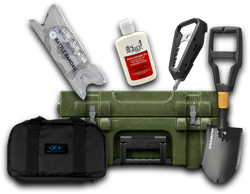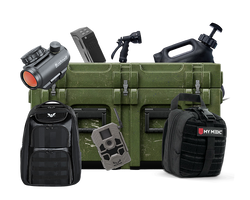
Surviving in extreme heat: Top tips for indoor and outdoor situations
Summer season can be pleasant at times, but sometimes it can get to an extreme level and become life-threatening. That is known as extreme heat or heat wave strike. Such situations can kill you if you don’t take preventive measures immediately. So, if you are looking for safety in heat, here we will discuss the top safety tips for indoor and outdoor situations.
Top 6 tips for safety in heat in indoor conditions
If you are present indoors, here are the top 6 heat safety tips that you must follow to stay safe and healthy.
1. Promote air circulation: Use multiple fans
Starting with the safety tips for heat in indoor conditions, you must promote air circulation as much as possible. Whether the air is humid or dry, promoting circulation can improve evaporation which will bring the cooling effect and help you stay cool.
It is unnecessary to use the fans installed at your home only since you can get additional bigger or smaller fans. However, be careful about now flowing hot air in your home since that would be more damaging.
2. Use cold water to lower your body temperature.
Water is one of the resources that will keep you cool in different ways. You can drink cold water to lower the body temperature internally. Similarly, you can spray it to keep yourself wet and cool. Soaking your feet in cold water will significantly reduce body temperature with proper blood circulation. If you have enough water, you can take showers or baths to stay cool.
3. If you have a basement with good ventilation, go there
One of the best safety tips for heat for those with a basement in their building is to utilize it. A basement is a place that does not get a lot of sunlight, so the environment is usually colder than the upper floors. However, good ventilation is still very important under such hot circumstances.
4. Check your indoor heat sources and eliminate them.
Sometimes we are our enemy when heat sources constantly run inside our homes. That can be an unsupervised oven, stove, extra light bulbs, or other heat-producing equipment. See for the devices that will produce a lot of heat while running and turn them off when you can. It will help cool down your home's environment for some time.
5. Avoid having foods and drinks that may cause body heat
Specific foods and drinks increase the metabolic heat in your body. These usually include:
- Alcohol
- Proteins
- Coffee
- Soda, etc.
For a better experience, you must go for watery foods like fruits and vegetables. Moreover, take them in smaller portions so your body does not need to keep the metabolic heat high for long.
6. Place water or ice in the path of air for a cooling effect
You can take containers of water or ice with wide open mouths and keep them in the airflow path. Placing them in front of the fans or windows where air flows inside your house will be beneficial. The airflow will naturally evaporate some water, which will cause the essential cooling effect you need.
Top 6 tips for safety in heat in outdoor conditions
Extreme heat can be even more dangerous if you are stuck outdoors. Below are the top 6 heat safety tips that will ensure your safety during outdoor conditions:
1. Stay under shade as much as possible
Whether in the city or some outdoor environment, you must find shade as much as possible. As you won't be indoors, finding that would be hard, but anything like a huge rock or a tree will make good shade for protecting your body from the sunlight. If you don’t have any shade, try building one quickly by taking big leaves, grass, etc., from the outdoor environment.
2. Look for public places with air conditioning.
Say you are in an urban environment far from home and want to stay safe from the heat wave. One of the best safety tips for heat here is to find buildings with air conditioning. There could be malls, libraries, or museums where you can be for a while and wait for the heat intensity to reduce. That way, your body temperature will normalize before anything bad happens.
3. Make your clothes wet to stay cool through evaporation
In outdoor situations like on a hike or a trail, if you find a supply of clean water, you can use it to make your clothes wet. It will follow the basic principle of evaporation that will reduce your temperature while the clothes stay wet.
4. Stay hydrated and be careful about your body's salts and electrolytes
Always keep plenty of water with you and check the weather forecast beforehand. Keeping drinks that restore bodily salt and electrolyte levels will also be important for your health and safety. The most important thing to consider in such situations is to drink water even when you are not feeling thirsty.
5. Wear a hat or use an umbrella to avoid sunlight exposure
Your head needs the most protection from sunlight and heat under extreme heat conditions. So, wearing a hat or umbrella can be the key to protection. This way, you will protect your upper body section, including your neck, from heat, which is vital.
6. Avoid activities that consume high energy.
When there is a heat stroke, you must avoid any activity that will consume a lot of energy from your body. It is because these activities can increase the temperature in your body, which makes fighting the condition difficult. Postpone any outdoor events or games to preserve your health.
Conclusion
Your safety in heat depends on how you tackle it. You may suffer a lot if you don't act at the right time. It is all about taking the right precautions. For instance, you may encounter a situation with no air conditioning in the indoor environment, or you don’t have enough cooling options in the outdoor environment. Under such circumstances, you can utilize the safety tips for heat to stay healthy and alive.
Share this article








